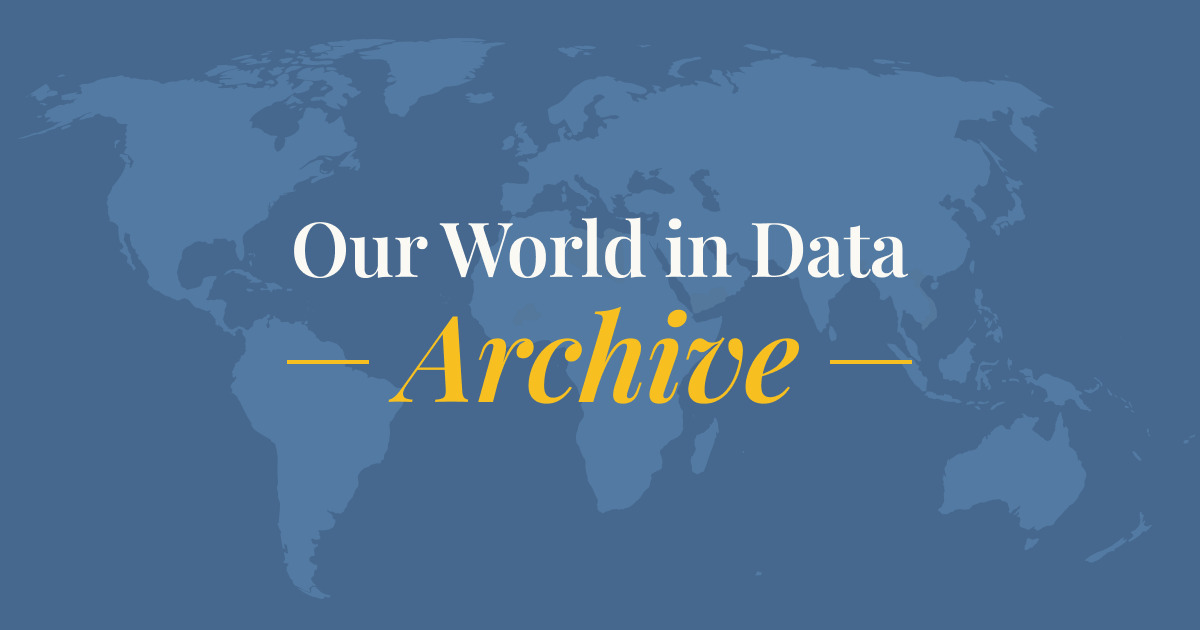Fiona joined us in 2021. She was previously a Turing postdoctoral fellow at the University of Exeter working on tracking the Sustainable Development Goals and modeling the Covid-19 pandemic. She has a Ph.D. in Ecology and Environment from UCL (London, UK) and an MSc in Conservation Science from Imperial College (London, UK).
Fiona joined us in 2021. She was previously a Turing postdoctoral fellow at the University of Exeter working on tracking the Sustainable Development Goals and modeling the Covid-19 pandemic. She has a Ph.D. in Ecology and Environment from UCL (London, UK) and an MSc in Conservation Science from Imperial College (London, UK).
September 26, 2019
Clean and safe water is essential for good health. How did access change over time? Where do people lack access?
October 20, 2022
The risk of death from influenza has declined over time, but globally, hundreds of thousands of people still die from the disease each year.
October 10, 2024
A guide to understanding the Living Planet Index and what it does and doesn’t mean.
December 09, 2024
Overuse is a risk for antibiotic resistance, but there are ways to reduce it.
September 25, 2019
Safe sanitation is essential to reduce deaths from infectious diseases, prevent malnutrition, and provide dignity.
May 19, 2025
Measles once killed millions every year. Vaccines changed this, preventing disease, long-term immune damage, and deadly outbreaks.
June 17, 2024
The world has seen a large decline in trachoma, but millions are still at risk. How can we make more progress against it?
June 26, 2023
There are several ways to measure homicides. What approaches do different sources take? And when is which approach best?
March 08, 2022
Where does our migration data come from? How are these metrics defined?

April 07, 2022
Explore our data and resources which are relevant context for the war in Ukraine.
July 07, 2022
In the late 1980s, there were near a million new cases of guinea worm disease recorded worldwide. In 2021, there were only 15. How was this achieved?
July 01, 2021
How many people lack access to basic handwashing facilities?
December 09, 2024
Many countries refuse to share their data, which is a risk for antimicrobial resistance.
April 20, 2022
Only a fraction of all polio cases are reported. Here we apply a method by Tebbens et al. (2010) to estimate the actual number of global polio cases.
October 13, 2022
The Living Planet Index is one of the most common measures used in biodiversity monitoring. But what is it, and where does this data come from?
June 09, 2022
The world is close to eradicating polio, but has been set back in the last few years. To achieve the goal of global eradication, it's crucial to improve testing.
June 02, 2025
As much as one quarter of deaths in Europe and the United States were once from tuberculosis.
September 05, 2023
To find ways to save lives, it’s essential to know what people are dying from. Explore global data and research on causes of death.
November 07, 2023
Child mortality remains one of the world’s largest problems and is a painful reminder of work yet to be done. With global data on where, when, and how child deaths occur, we can accelerate efforts to prevent them.
May 24, 2022
Explore data on confirmed mpox cases and deaths.
September 01, 2021
How is the burden of disease distributed and how did it change over time?
November 18, 2022
Migration has been an important source of economic development and poverty reduction. Explore data on global migration.
April 01, 2022
The world has made great progress against polio and two out of three types of wild poliovirus have been eradicated. This page presents global data and research on polio and the remaining challenges in eradicating the disease.
July 06, 2013
How common are homicides? How does this differ across countries? And how is this changing over time? Explore global data on homicides.
December 19, 2022
Explore the diversity of wildlife across the planet. What are species threatened with? What can we do to prevent biodiversity loss?
October 01, 2022
Vaccines have saved millions of lives and transformed global health. This page presents data and research on their history, impact, and future.
May 18, 2023
Flu epidemics kill hundreds of thousands of people globally each year, but countries can respond and save lives with better data.
February 09, 2021
How are forests distributed across the world? How much do we lose to deforestation every year?
July 01, 2021
Explore global usage of clean water and sanitation.
July 03, 2023
Diarrheal diseases are one of the leading causes of child deaths while they are largely preventable. How can we continue to make progress against these diseases?
December 21, 2023
Tuberculosis is still among the most common causes of death globally. Explore global data on tuberculosis and its trends over time.
December 23, 2024
Antibiotics revolutionized medicine, but their effectiveness is threatened by resistance. This page presents global data and research on antibiotics and antibiotic resistance.
June 17, 2024
Neglected tropical diseases affect millions of people despite the existence of cheap interventions to control them.
Help us do this work by making a donation.